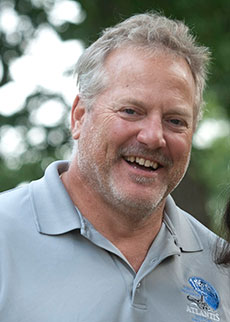 How do you know what’s living in your water supply?
How do you know what’s living in your water supply?
Thomas Shahady, professor of environmental science at the University of Lynchburg, discusses a simple way to find out.
Prior to arriving here at University of Lynchburg, I spent five years teaching part-time at Lenoir-Rhyne College, Catawba Valley Community College and working as a consultant with industry. Through my consulting work, I taught many courses on environmental compliance, worked with the United States Environmental Protection Agency and North Carolina Department of Environmental and Natural Resources on compliance issues and conducted many phases of environmental research for the textile industry. Prior to my employment in North Carolina I spent two years as a consultant working on lake management issues throughout the Finger Lakes Region of New York State.
Health of Water Supply
Water is life. People across the globe are in a struggle between use of land, our economic engine, basic biological needs and maintaining clean water. How do communities participate to maintain their own water health?
Research I am conducting looks at just that – bringing communities into science. In Costa Rica, water quality determination is expensive, very government centralized and very technical. Well beyond the reach of the ordinary citizen using the water.
But these ordinary citizens who have the ultimate stake in clean water organize themselves into communities most often around a reliable water source. They drink, use, farm, clean and recreate in these water resources. They hope this water meets their needs while simultaneously treating the waste they create.
By contrast, the fish and insects living in the water have a similar story to tell – they do not like polluted water any more than we do. They move, reproduce, feed and multiply where the water and habitat suits them the best. They are our canaries in a coal mine.
Our research team studied different river systems in differing communities using simple collecting methods and an easy to use index. Using technical expertise and a wide range of chemical, biological and physical parameters, we developed a simple score to calculate based upon what is living in your water. This score rates a river in any community from excellent to poor. Communities using this index get needed insight into the quality of their water supply.
Our continued research compares these calculated scores to greater community health issues such as disease and well-being. We want to know where and if impacted areas of water quality contribute to health problems. And we continue to sample the rivers to refine our index.

